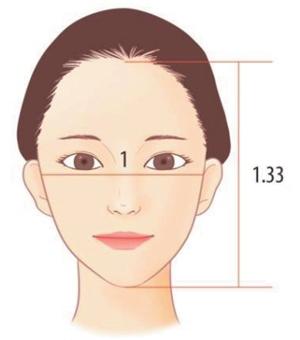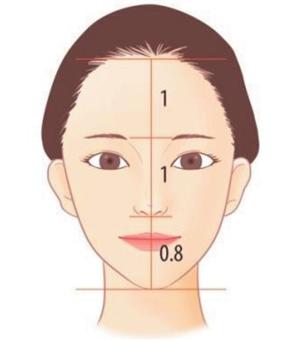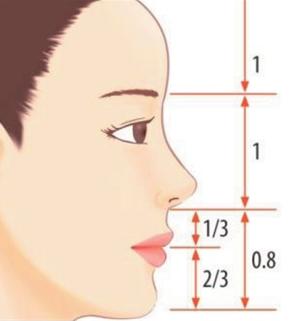This article in the series discusses Images by Filler first developed by Dr. Jeon of Banobagi Skin Clinic in Seoul, Korea. Images by filler procedure considers the entirety of the facial image rather than focusing on a particular site. In this series, Dr. Jeon will discuss important details of this new procedure in the order of the summary of images by filler, selection of the patient and filler, patients most and least likely to benefit from images by filler, method of treatment, side effects and precautions with the procedure, etc. Moreover, he will also provide various case studies to give a clearer picture of images by filler procedure to our readers. Images by filler procedure does not focus on particular facial area and its success depends greatly on the doctor’s creativity. This procedure promises to be new and successful field in filler treatment.
Not too long ago, I came across a news report on a Korean broadcasting website, KBS, that Korea had the highest rate of plastic surgery procedures in the world with 13.5 procedures performed per one thousand people. The report also said that breast implantation was the most common procedure in the US and Brazil, rhinoplasty was prominent in Japan and China and non-incision procedures such as mole removal and botulinum toxin injection were commonly chosen in Korea. I thought it was a bit far-fetched to count mole removal as plastic surgery but it made me think again about the preference of non-incision procedures in Korea as Korea was leading the world in frequency of plastic surgery.
I first came across the filler procedure in 2004 during my career. At the time, Korean Dermatological Association mainly featured lectures on chemical peeling, or botulinum toxin and filler procedure was not as popular. However, there were a few pioneering doctors that gave innovative lectures on facial filler. They left quite an impression on me and I was inspired enough to try filler procedures following their footsteps. Most lectures on filler focused on nasolabial folds, frown lines, forehead and cheeks. That is, these lectures discussed how to fill the nasolabial folds, what type of filler to use, or which technique was the most effective. I learned a lot from these lectures but started to wonder if the fillers could be used to correct the total facial image rather than being limited to partial site.
[Ad. ▶Ultra Skin/Pastelle - Manufacturer: WONTECH(www.wtlaser.com)]
In fact, when it came to lasers, I was also harboring similar thoughts. I was losing interest in using a single laser for various effects. Rather than trying to bring different effects with a single laser, I had thought it would be more effective to have many types of lasers, each with different functions, and apply them simultaneously depending on the types of skin lesions to bring about the best overall results for the whole face, as if to fit together many pieces of a puzzle to complete the whole picture. I got this idea about two years into my private practice and it was called ‘program treatment’ at the time, the details of which are discussed below.
Using Ellipse I₂PL, brighten the overall facial tone and using Gentlase (currently, G-Max), remove hair below the nose, between and around eyebrows. Using CO₂ laser, remove milium, moles, syringoma, and verruca plana, etc. If necessary, combine the use of Er:YAG laser. Using Q-switched ruby laser, treat freckles, lentigo, and seborrheic keratosis, etc. Using the Sellas fractional laser, tighten the pores and Vbeam to treat acne erythema and telangiectasia. Finally, using the laser toning, brighten the overall skin tone one more time. This is the so called ‘All-in-one therapy’ that I developed four years ago. This method treats all types of skin lesions in one day.

Figure 1. The Golden Section is the only point in line ab that divides line ab in a ratio of 1.618(a) to 1(b); 1(a) to 0.618(b); and 1(a) to 1.618(a+b). Revised from Clin plastic surg 38(2011) 347-377
Patients were satisfied beyond expectations. They compared the effect of the ‘All-in-one therapy’ to that of the simultaneous plastic surgery procedure of the eye, nose and facial contour. In other words, it was possible to use different types of laser at the same time to bring the drastic improvements just as with plastic surgery. Images by filler is a step forward from this All-in-one therapy.
In 2011, a Canadian plastic surgeon named Arthur Swift gave a lecture in Korea on the topic of ‘BeautiPHIcation: A Global approach to facial beauty’, based on his paper published in Clinical Plastic Surgery. In this lecture, he argued that the existent beauty, whether natural or man-made, follows the principle of the golden ratio. The golden ratio can be mathematically expressed as 1.618:1. The number 1.618 was termed ‘phi’ after the Greek sculptor Phidias who often used it in his artworks. I was very impressed with the idea of approaching the human face with the concept of ‘phi’. And I agreed with his ideas of approaching the entire face using filler and botulinum toxin, rather than focusing on limited areas. At the time, I was performing filler procedures for the entire facial image and Dr. Swift’s lecture was more than enough to convince me further of the benefit of this method. I assume those pioneering doctors who have been performing filler procedures longer than anyone must have also taken this approach. I wanted to have my own filler technique just like the 'All-in-one therapy' and create a trend. This was how images by filler procedure came into being.
In detail, first, close history taking and consultation with the patient informs the doctor of where the patient wants to improve, correct and rejuvenate in his or her face. After taking photos, the doctor gives explanation based on the entire facial image rather than a particular area and moves on to the actual injection of filler. For example, the procedure covers at least three or all of the front cheek bones, nasolabial folds, cheeks, marionette lines, and the chin as well as the forehead, between the eyebrows, nose, palpebral arch, and mid cheek groove. The Total Filler Therapy is carried out after shaping the contour of the face with filler. This is the process of images by filler therapy.
The important facial features that determine the overall beauty of the face are forehead, eyebrows, eyes, nose, lips and the facial contour. The facial contour includes the cheek bones, cheeks and chin. Of these areas, those eligible for filler procedure are the forehead, nose, lips and facial contour. In the order of importance in terms of images by filler procedure, it would be front cheek bones, mid-cheek groove, nasolabial folds, marionette lines, chin, cheeks and forehead. However, the order of importance may differ depending on the patient’s demands and his or her facial shape.
It is important to first analyze the face with mathematical ratio before performing images by filler procedure. The most ideal ratio of the horizontal and lateral lengths of the face is 1: 1.33. The horizontal axis connects upper tragus of both sides and the lateral axis connects the trichion and gnathion (Figure. 2).

Figure 2. The most ideal ratio of the horizontal and lateral lengths of the face
When dividing the front side of the face into three sections, the upper face is from the trichion to glabella, the midface is from glabella and subnasale and the lower face is from subnasale to gnathion. The ideal ratio of the three sections in an Asian is thought to be 1: 1: 0.8. In a Caucasian, it is mostly thought to be 1: 1: 1. This ratio can of course differ depending on personal taste, however, Asians tend to view faces with a relatively smaller lower face section as youthful looking, thus, 1:1:0.8 is regarded the most ideal ratio.

Figure 3. The most ideal ratio of three sections of the face (the front)
From the side, the face may appear as the below picture (Figure 4). The distance between the stomion and gnathion are about twice as long as the distance between the subnasale and stomion.

Figure 4. The most ideal ratio of three sections of the face (the side)
There might be a few people who may think autologous fat transplantation may be better for the overall improvement of the face. The autologous fat transplantation is indeed a very effective procedure that improves the overall image of the face and may be preferred due to its lower cost compared to the filler. However, many people are also concerned with its downtime such as general anesthesia, extraction of fat, pain, edema and bruises. Another drawback of this procedure may be the rather unnatural appearance of the face. For those concerned with these aspects, images by filler may provide a better solution.
In the next article, I will discuss the type of patients most suitable for images by filler procedure and selection of the correct filler.
- To be continued -
▶ Next Artlcle : #2. Patients Appropriate for Filler and Filler Selection





















